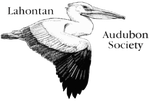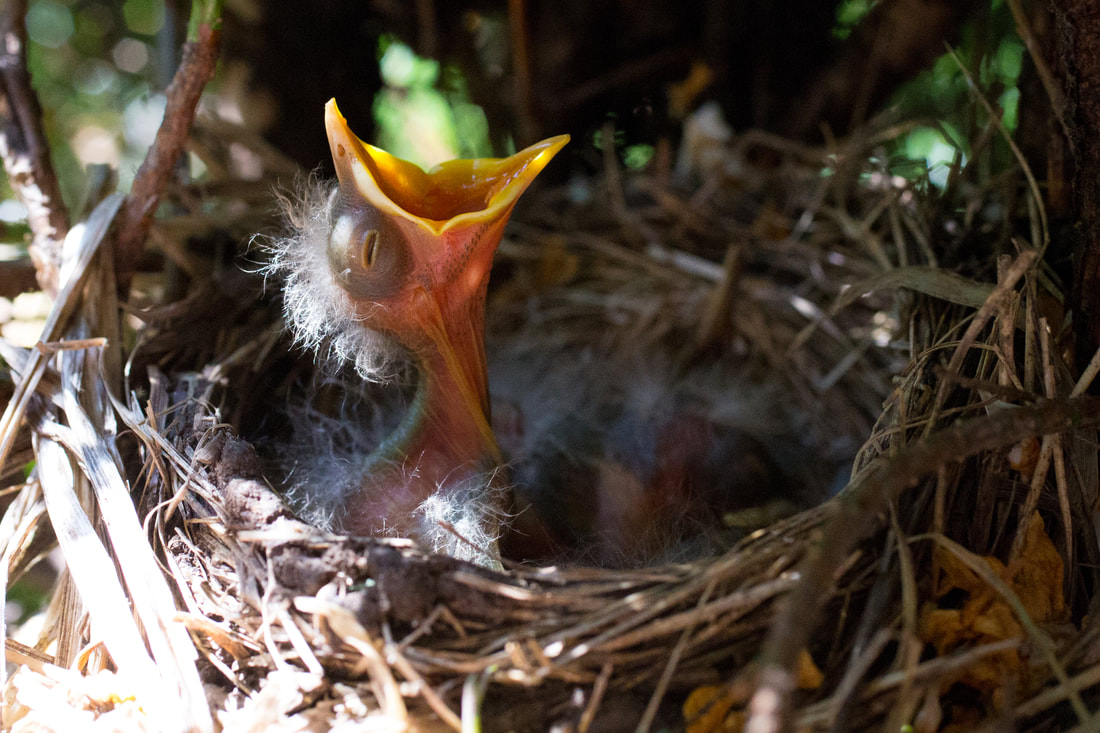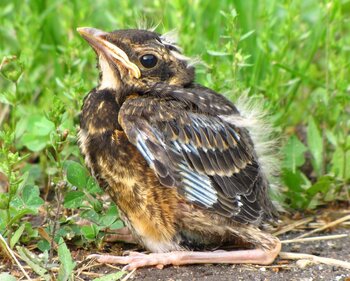|
By Valerie Andersen As Spring is approaching, it’s time to talk about baby birds and what to do if you find one on the ground that can’t fly. First, figure out if the bird is a nestling or a fledgling. Fledglings are feathered and capable of hopping, flitting, and gripping tightly to your finger, while nestlings are sparsely feathered, often with closed eyes, and not capable of doing much.
Additional resources on what to if you find a baby bird: Cornell University’s All About Birds U.S. Fish & Wildlife Service Toronto Wildlife Centre’s Help Baby Birds a step-by-step guide to help you determine what you should do and how to contain the injured bird, if rehabilitation is necessary. Injured Birds: If you have found both parents dead, the young bird is injured, and are absolutely certain that the bird was orphaned, then contact a local wildlife rehabilitator. If they can take it, you can use a dish towel, blanket, or t-shirt to capture it. Place the bird in a cardboard box with ventilation holes punched in it, or in a plastic pet container. If it’s a small bird, you can even use a shoe box. Keep the bird warm and put it in a quiet place away from pets and children. Transport the bird as quickly and safely as possible to a rehabilitator |
topics
All
Archives
July 2024
|




 RSS Feed
RSS Feed